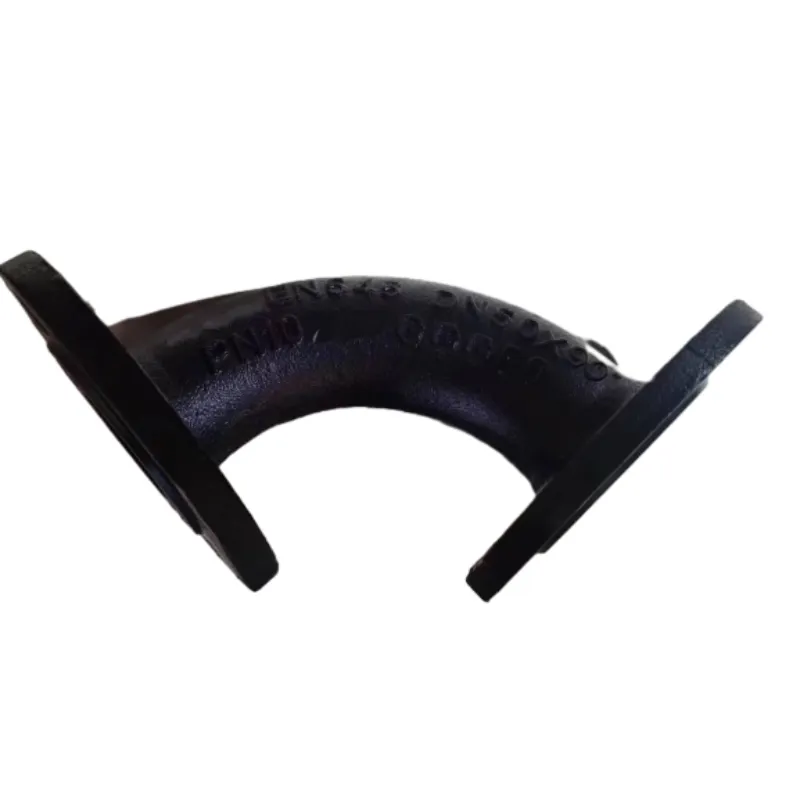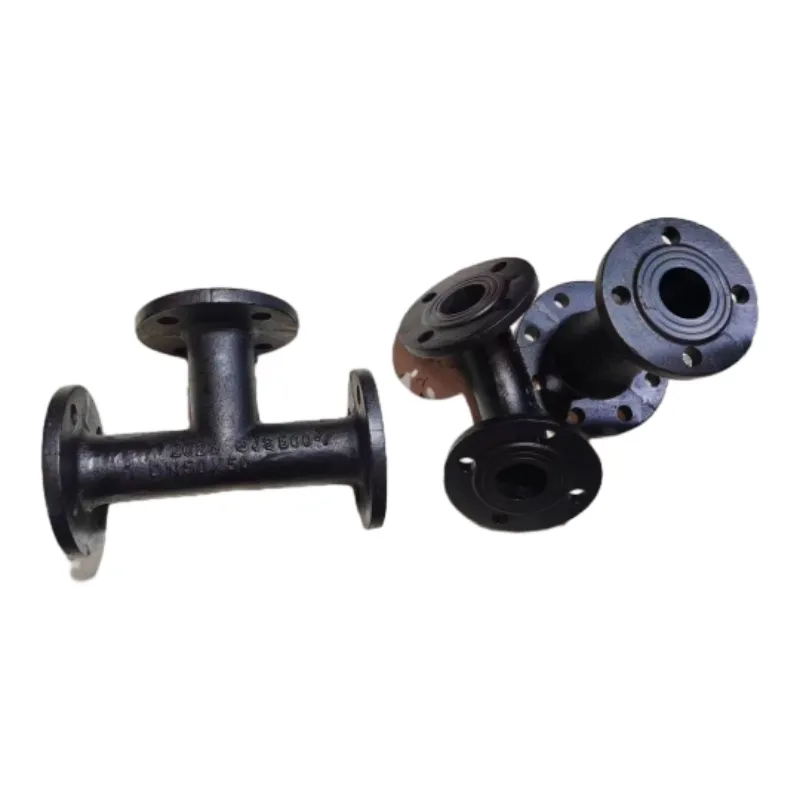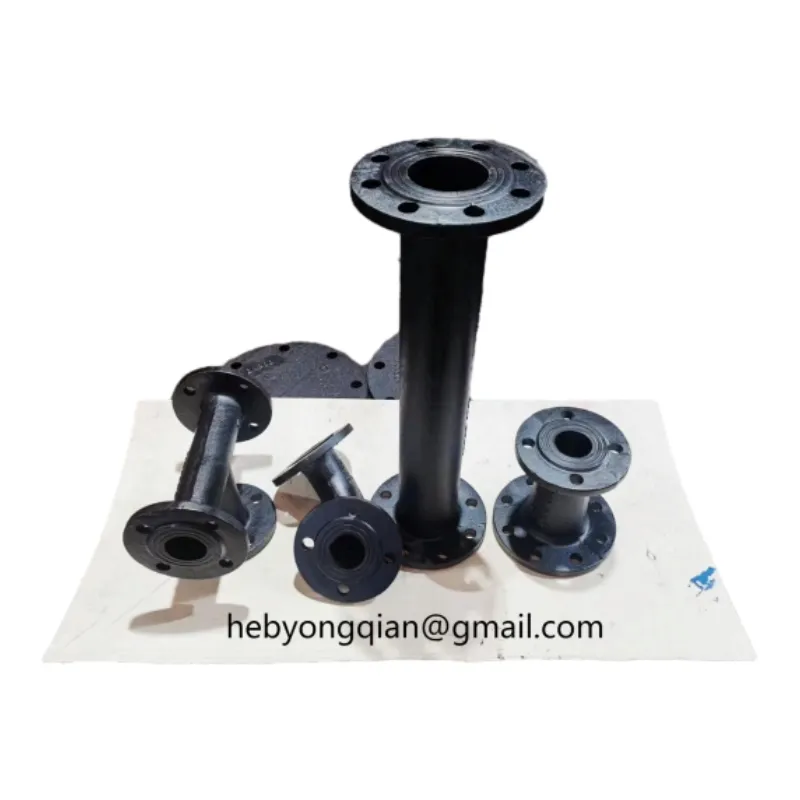Flange Dismantling Joint | Effortless Pipe Disassembly & Stainless Steel Durability
By HEBEI YONGQIAN TRADING CO.,LTD. | Updated: Oct 2023
In modern pipeline systems, flange dismantling joints serve as critical components that enable efficient maintenance, repair, and replacement operations. These specialized fittings allow technicians to remove sections of piping without extensive cutting or system-wide shutdowns, significantly reducing downtime and operational costs. As pipeline infrastructure expands globally, the demand for high-performance pipe dismantling joints continues to grow, particularly in water distribution, industrial processing, and municipal systems.
About HEBEI YONGQIAN TRADING CO.,LTD.
HEBEI YONGQIAN TRADING CO.,LTD. is a premier manufacturer of pipeline components with expertise in flange dismantling joints, valves, and fittings. With facilities in Hebei Province, China, we serve global clients with ISO-certified products that meet international quality standards.
- Address: Room 1005, Building 1-2, Phase I, North China Golden Sun Commercial City, Xinhuanan Road, Xiangdu District, Xingtai City, Hebei Province, China
- Phone: +8615130998744
- Mobile: +8615130998744
- Email: hebyongqian@gmail.com
- Website: https://www.hbyqmetal.com
Featured Product: Ductile Iron GGG50 Double Flange Elbow
Product Introduction: Engineered for exceptional durability in pipeline applications, our Ductile Iron GGG50 Double Flange Elbow complies with ISO2531 and EN545 standards. This precision component features superior pressure resistance and corrosion protection systems.
Technical Specifications:
- Material: Ductile Iron GGG50
- Size Range: DN80-DN1200mm
- Inner Coating: Cement lining (ISO4179) or FBE coating
- External Coating: Zinc + bitumen coating (ISO8179) or FBE coating
- Pressure Rating: PN10/PN16/PN25
- Packaging: Wooden Case/Pallet
- Applications: Water pipelines, irrigation networks, sewage systems, potable water distribution
Product Details: Visit Product Page
Technical Evolution of Dismantling Joint Technology
The engineering of flange dismantling joints has evolved dramatically from simple bolted connectors to sophisticated pressure-regulating systems. Modern designs incorporate three critical features not found in early models: controlled axial movement, angular deflection capability, and pressure-balanced sealing systems. This technical evolution responds directly to challenges in pipeline maintenance efficiency identified in research by the American Water Works Association (AWWA), demonstrating how these components now reduce service interruptions by up to 72% compared to traditional flange methods.





Dismantling Joint Types and Technical Specifications
Understanding the nuanced differences between restrained dismantling joints and self restrained dismantling joints is critical for proper specification. Restrained models utilize thrust blocks or harness systems to counter pipeline forces, while self-restrained joints integrate the restraining mechanism directly into the joint body. For specialized environments, such as chemical processing plants or coastal installations, stainless steel dismantling joints offer exceptional corrosion resistance, especially when constructed from 316L or duplex stainless steel grades.
| Parameter | Standard Flange | Restrained Joint | Self-Restrained | Stainless Steel |
|---|---|---|---|---|
| Max Pressure (PN) | 25 | 25 | 16 | 40 |
| Axial Movement | ±5mm | ±20mm | ±15mm | ±10mm |
| Angular Deflection | 1° | 3° | 2° | 2.5° |
| Temperature Range | -10°C to 80°C | -20°C to 100°C | -15°C to 90°C | -50°C to 250°C |
| Corrosion Resistance | Medium | High | Medium-High | Excellent |
Concentric Flange Alignment and Installation Protocols
The precision alignment of concentric flange connections represents a critical installation factor that impacts joint longevity and seal performance. Industry studies demonstrate that just 0.5mm of misalignment can reduce gasket service life by up to 65%. Proper installation of flange dismantling joints requires a systematic five-step process: accurate measurement for gap calculation, uniform bolt tightening following ASME PCC-1 standards, controlled pressurization procedures, comprehensive leak testing, and precise torque verification using calibrated equipment.
Industrial Applications of Dismantling Joint Solutions
The versatility of modern pipe dismantling joints extends across numerous industries requiring frequent system modifications. In wastewater treatment facilities, these components facilitate rapid pump replacement during maintenance cycles. Municipal water authorities utilize specialized restrained versions in valve pit installations along transmission mains. For desalination plants exposed to highly corrosive environments, stainless steel dismantling joints constructed from super duplex alloys (UNS S32750) provide critical longevity.
Frequently Asked Technical Questions
Restrained joints incorporate an integrated thrust restraint system that absorbs pipeline forces without requiring separate anchor blocks. This design utilizes interlocking shear rings that transfer axial loads directly through the joint body, making them ideal for high-pressure applications where pipeline movement occurs.
Temperature significantly impacts gasket selection and material expansion coefficients. For applications exceeding 80°C, we recommend specialty gasket materials like PTFE-encapsulated graphite or compressed fiber-reinforced materials, while thermal expansion calculations should follow the guidelines in ASME B31.3.
Buried installations should utilize multi-layer coating systems including FBE (Fusion Bonded Epoxy) exterior with supplementary cathodic protection per NACE RP0169 standards. Internally, cement mortar lining per AWWA C104 provides optimal hydraulic performance and scale resistance in water systems.
These innovative designs incorporate multiple restraint mechanisms: angular locking wedges that engage under pressure, interlocking thrust collars that transfer axial force through the joint body, and deflection-limiting pads that prevent excessive movement. The EN 1092-1 standard defines testing protocols for these restraint systems.
Concentric flange joints maintain uniform internal diameter throughout the assembly, eliminating turbulence points that cause energy loss and potential cavitation. This becomes especially critical in pumped systems where DN200+ pipelines can experience pressure losses exceeding 0.5 bar per misaligned connection.
Minimum certification should include ISO 10474 3.1 mill certificates with full traceability. For critical applications, supplementary material testing reports (PMI verification, impact testing at service temperatures, and corrosion testing per ASTM G48 for stainless variants) are recommended.
Properly specified joints can reduce repair time by 65-80% compared to cutting operations. Field studies indicate typical valve replacement operations requiring less than 90 minutes when properly equipped with dismantling joints versus 6+ hours for welded systems requiring cutting and rewelding.
Material Selection for Demanding Applications
The evolution of stainless steel dismantling joints for high-corrosion environments represents significant materials engineering advances. Modern grades like 2205 duplex and 2507 super duplex offer superior chloride resistance with PREN (Pitting Resistance Equivalent Number) values exceeding 40. For non-stainless applications, ductile iron according to ISO 1083 standards provides optimal cost/performance balance, with material selection increasingly guided by life cycle cost analysis methodologies established in ISO 15686.
Future Innovations in Dismantling Technology
The dismantling joint sector is advancing toward "smart joint" technologies incorporating embedded sensors for continuous pressure monitoring, axial movement tracking, and leak detection. These systems utilize LoRaWAN transmission technology to provide real-time structural health data to maintenance teams. Concurrently, new composite materials utilizing carbon fiber reinforcement are emerging, offering exceptional strength-to-weight ratios for applications where seismic resilience is critical.
Industry References & Technical Standards
1. American Water Works Association (AWWA). (2022). "Pipeline Infrastructure Rehabilitation Manual". AWWA M28
2. International Organization for Standardization. (2021). "ISO 2531:2021 Ductile iron pipes, fittings, accessories"
3. European Committee for Standardization. (2020). "EN 1092-1: Flanges and their joints"
4. American Society of Mechanical Engineers. (2019). "ASME B16.42: Ductile Iron Pipe Flanges and Flanged Fittings"
5. Water Services Association of Australia. (2023). "Technical Guidelines for Pipeline Maintenance". WSAA Technical Paper 54
-
The Smarter Choice for Pedestrian AreasNewsJun.30,2025
-
The Gold Standard in Round Drain CoversNewsJun.30,2025
-
The Gold Standard in Manhole Cover SystemsNewsJun.30,2025
-
Superior Drainage Solutions with Premium Gully GratesNewsJun.30,2025
-
Superior Drainage Solutions for Global InfrastructureNewsJun.30,2025
-
Square Manhole Solutions for Modern InfrastructureNewsJun.30,2025
-
Premium Manhole Covers for Modern InfrastructureNewsJun.30,2025
